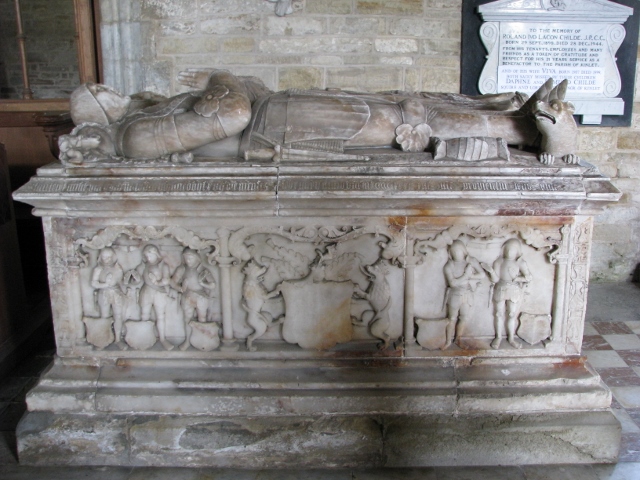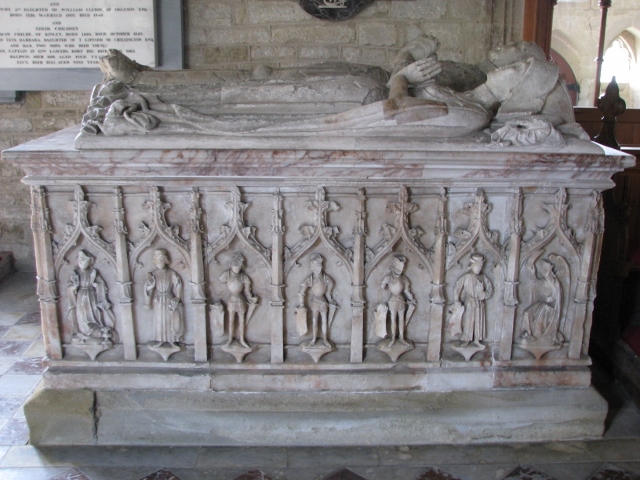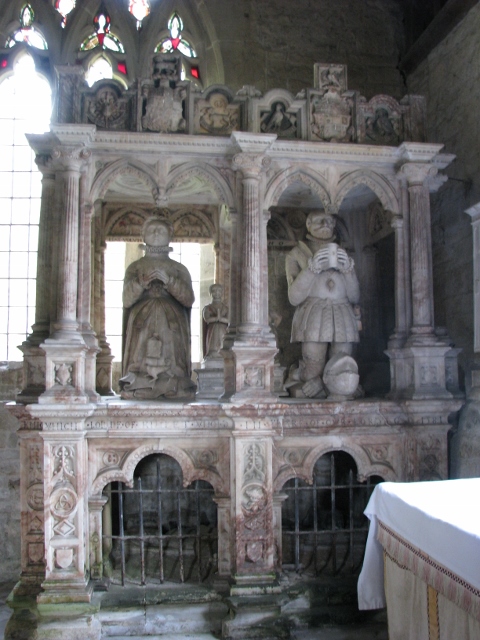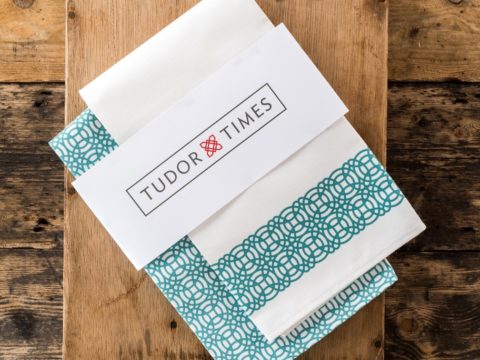Tudor Church Monuments
by Elizabeth Norton
Step inside any mediaeval church and you will almost certainly find at least one early tomb, with the face of the occupant staring back at you, or lying recumbent in prayer. These church monuments offer an insight into the minds of the people who built them, with their thoughts and preoccupations still evident to observers now. Such monuments, although subject to attacks, survived the Reformation better than much of the fabric of churches. They continued to be built throughout the Tudor period and into the seventeenth century.
Prayers for the Dead
Graves have been marked for thousands of years, with Anglo-Saxon grave slabs – often incised with a cross – a common survival from before the Norman Conquest. This desire to commemorate the dead continued into the later mediaeval period, with the development of the doctrine of Purgatory becoming the primary reason for their creation.
According to the teaching of the traditional church, the souls of the dead were condemned to spend a number of years in Purgatory before they could reach Heaven. Their time there could be reduced with the prayers of the living. Most late medieval tombs were therefore designed in an attempt to procure such prayers, with inscriptions asking onlookers to pray for the occupants and with their names prominently displayed. This position changed during the Reformation when the doctrine of Purgatory was swept away.
Iconoclasm
Tombs came under attack from the reign of Henry VIII onwards. Many did not survive the iconoclasm, particularly those that commemorated clerics or which were sited in religious houses. Some wealthy families were able to protect their monuments, such as the Duke of Norfolk, who moved his family tombs from Thetford Abbey to Framlingham parish church.
Lower down the social scale the Blount family exhumed the body of Sir John Blount (d.1531) when his tomb was destroyed in Greyfriars in London in the 1540s. His son commissioned a new tomb in the parish church at Kinlet in Shropshire – the family's seat.

Even royal tombs were not immune from the destruction, however, with that of Henry I in Reading Abbey disappearing.
The Blount Tombs
Many tombs did survive, including that of Sir John Blount's grandparents, Sir Humphrey (d.1477) and Dame Elizabeth Blount, which shows the couple reclining. Their children, the Virgin Mary and an angel appear as weepers around the tomb chest.

Sir John Blount's post-Reformation tomb is very similar in form, again showing the knight and his wife reclining.Their eleven children, including the famous Bessie Blount, who was the mistress of Henry VIII, are also depicted as weepers. For a tomb built in the late 1540s/early 1550s, the religious imagery of the earlier tomb was understandably absent.
As well as tombs that survived, the second half of the sixteenth century also saw a thriving tomb building industry. Alabastermen, such as Richard Parker of Burton on Trent, who built Sir John Blount's tomb, were much in demand. This was largely due to a proclamation issued by Elizabeth I in September 1560, which banned the destruction of tombs.
She framed this in secular terms, complaining that the iconoclasm both extinguished 'the honourable and good memory of sundry virtuous and noble persons deceased' as well as placing 'the true course of inheritance' in danger, since tombs have always recorded marriages, lineages and genealogy.
Secular Commemoration
Elizabeth's proclamation gave new life to the commemoration of the dead, permitting them for the glorification of the deceased and for setting out lines of descent – highly useful where inheritance was largely based on lineage. Tomb patrons embraced this, with Elizabethan tombs focussing on the deeds of the individual rather than the need to elicit prayers from the living.
The tomb of Sir George Blount at Kinlet (d.1581), for example, who was the son of Sir John Blount, included a long inscription highlighting his achievements. George appeared kneeling at prayer on the top half of the monument, surrounded by his family. Elizabethan monuments, such as George's, were often built on a considerable scale.
Tombs remained of great importance in the post-Reformation period, with elaborate tombs, such as the great tomb of Robert Cecil at Hatfield continuing to be built into the seventeenth century before another round of iconoclasm began during the Civil War. For most patrons, their meaning had changed, with their religious significance stripped away to focus solely on the occupant and his lineage.
The Meaning of Tombs After the Reformation
One question remains, however. Although after 1560 tombs were officially considered to be connected with family history and personal achievements, is this really how they were viewed by everyone? Although the top half of Sir George Blount's tomb looks entirely Elizabethan, the effigies, with their Classical pillars, rest on a hollowed out tomb chest containing the sculpture of a shrouded corpse. Such an image, which functioned as a memento mori, encouraged onlookers to think on the idea that 'for as ye are so once was I, And as I am so shall you be'.

This always been an effective means of eliciting prayers and was regularly employed in fifteenth century monuments. Was it so different for George, who remained a practising Catholic? The form of the tomb, which was commissioned by his nephew and heir, gives a tantalising hint as to the religious beliefs – and motivations – of the tomb patron.
Tudor church monuments continue to fascinate, allowing an insight into the world-view of their occupants and patrons. They are probably the only five hundred year old artefacts (other than buildings) still existing outside museums and available to everyone who chooses to visit them.
Elizabeth Blount
Family Tree


















